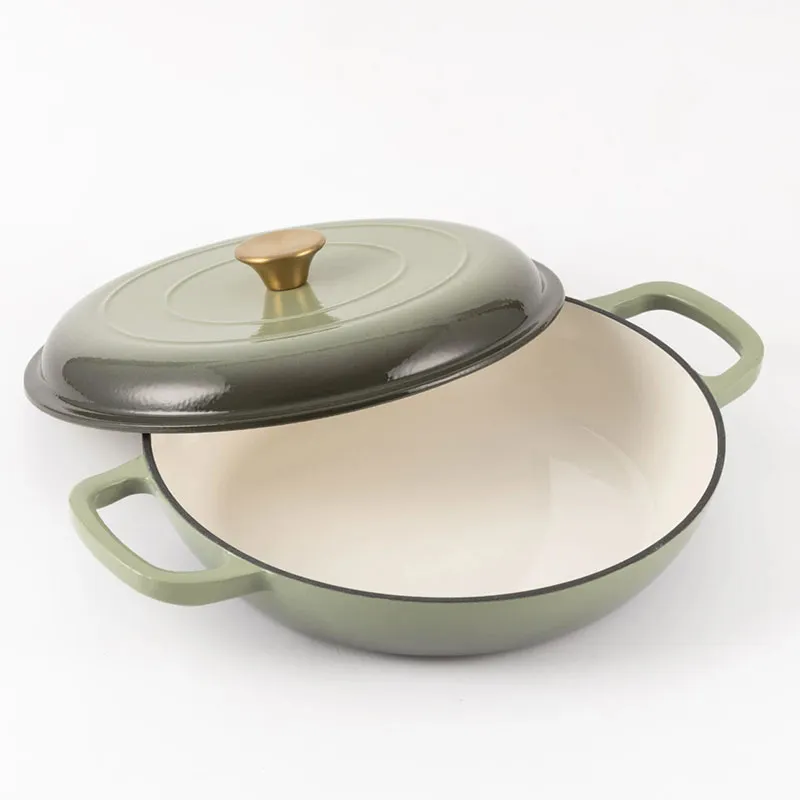
cast iron griddle on gas stove
The Art of Cooking with a Cast Iron Griddle on a Gas Stove
Cooking with a cast iron griddle on a gas stove is a culinary experience that combines tradition with versatility. The cast iron griddle, renowned for its excellent heat retention and even heat distribution, is an essential tool in kitchens around the world. When paired with the controllable flames of a gas stove, cooks have the power to create a plethora of delectable dishes. This article delves into the benefits of using a cast iron griddle, tips for optimal use, and some delicious recipes to try out.
Benefits of Cast Iron Cookware
Cast iron cookware, including griddles, has been celebrated for centuries due to its durability and heat retention capabilities. One of the primary benefits of using a cast iron griddle is its ability to hold and distribute heat evenly across its surface. This characteristic ensures that food cooks uniformly, reducing the chances of hot spots that can lead to unevenly cooked meals.
Moreover, cast iron griddles develop a natural non-stick surface when properly seasoned, which can enhance the flavor of foods and make cooking and cleaning much easier. The seasoning process involves applying oil to the griddle and heating it, creating a polymerized layer. Over time, with proper care, this layer deepens and improves the cooking surface, making it ideal for everything from pancakes to grilled vegetables.
Another significant advantage of cast iron is its ability to withstand high temperatures, making it perfect for achieving that coveted sear on meats. This is particularly valuable when working with a gas stove, where the flames can be adjusted for precise heat management.
Tips for Using a Cast Iron Griddle on a Gas Stove
1. Preheat the Griddle Always preheat your cast iron griddle on a low flame. This gentle warming helps to prevent warping and ensures an even cooking surface. As it heats, gradually increase the flame to the desired temperature for your recipe.
2. Avoid Cooking with High Acidity While cast iron is versatile, highly acidic foods like tomatoes can react with the metal and create off-flavors. It’s best to avoid cooking these types of foods until your griddle is well-seasoned.
cast iron griddle on gas stove

3. Use the Right Utensils Metal utensils can scratch the surface, so it’s advisable to opt for wooden or silicone tools. This will help maintain the seasoning.
4. Caring for Your Griddle After cooking, it’s essential to clean your griddle properly. Avoid soap, as it can strip the seasoning. Instead, use hot water and a scrub brush. For any stubborn bits, a gentle scrape with a non-metal scrubber will do the trick. Dry it immediately and apply a thin layer of oil to prevent rust.
Recipes to Try
1. Fluffy Pancakes To make the perfect pancakes, preheat your cast iron griddle at medium heat. Mix flour, eggs, milk, and a touch of baking powder to create a smooth batter. Lightly grease the griddle with oil or butter, and pour the batter in small circles. Cook until bubbles form on the top, then flip to golden perfection.
2. Grilled Vegetables Cut your favorite vegetables—bell peppers, zucchini, and mushrooms—into even slices. Toss them in olive oil, salt, and pepper. Preheat the griddle and arrange the vegetables in a single layer. Grill until they are charred and tender, stirring occasionally for even cooking.
3. Seared Chicken Breasts Season chicken breasts with salt, pepper, and your favorite spices. Preheat your griddle on high heat until it’s smoking, then add the chicken. Sear for around 6-7 minutes on each side to create a beautifully browned crust while ensuring the inside remains juicy.
Conclusion
Cooking with a cast iron griddle on a gas stove opens up a world of culinary possibilities. With proper care and technique, this versatile kitchen tool can elevate your cooking experience. From breakfast treats to savory dinners, a cast iron griddle can truly be your best friend in the kitchen. So, embrace the art of cast iron cooking and savor the delicious flavors it brings to your meals.
-
Season Cast Iron Perfectly with GPT-4 Turbo TipsNewsAug.01,2025
-
High Quality Cast Iron Cookware - Baixiang County Zhongda MachineryNewsAug.01,2025
-
Premium Cast Iron Pan: Durable & Perfect HeatNewsAug.01,2025
-
High Quality Kitchen Durable Black Round Cast Iron Cookware Pancake Crepe Pan-Baixiang County Zhongda Machinery Manufacturing Co., Ltd.NewsAug.01,2025
-
Cast Iron Cookware - Baixiang County Zhongda Machinery | Nonstick, Heat ResistanceNewsAug.01,2025
-
High Quality Kitchen Durable Black Round Cast Iron Cookware - Baixiang County Zhongda Machinery | Non-Stick, Heat Retention, DurableNewsJul.31,2025


